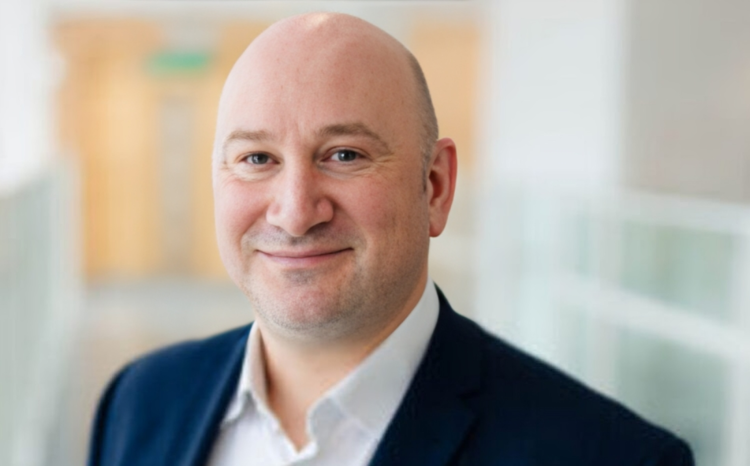From the Heart and Chest
- 11 June 2013

As I write this month’s column, my trust is less than one month from go-live with its new electronic patient record system.
On 26 June, the Liverpool Heart and Chest Hospital will go from being a paper-based hospital, with electronic systems that operate in silos and print to paper, to a virtually paper-free hospital. As you will imagine, things are a little tense at base camp…
Air travel hell
Recently, on the way to Dublin for eHealth week 2013, I had a stark encounter with an industry that often doesn’t serve its end users well – the airline industry – when I got “bumped” off an overbooked flight.
It is standard practice is to overbook flights. Airlines operate in the knowledge that a reasonable proportion of business travellers will exercise their option to vary their travel, and argue they’ll have vacant seats if the flight isn’t overbooked.
However, this displays a lack of common sense when it comes to planning. Twelve years ago, I was travelling to Nice on the first day of half term with young family.
We were among a large cohort of irate travellers – mostly families – who were bounced. Business travellers vary their travel, but families going for a break during half term don’t. It isn’t rocket science.
This time, I was travelling the day after a big Man U game. Now, I don’t follow football much these days, but even I know that Man U have a big Irish following – after all, the club is famous for most of their supporters not hailing from Manchester!
Again, it’s not rocket science. When you contrast this lack of intelligent planning with the targeted service that the supermarkets and internet traders use, the contrast is vast.
My fellow EHI columnist, Joe McDonald, might be having problems with a bank that thinks he’s dead, but I’m not much better off – Aer Lingus doesn’t seem to care that I’m alive.
It’s all about the end user
The philosophy of my trust’s EPR team throughout has been to create a system for the end user. But who is the end user? It’s an interesting question.
I must confess that though the “true” end user is definitely the patient and their family, I usually regard the clinical staff of the hospital as the end user.
I feel this is justified as they are the ones who will directly interact with the EPR; and many of the benefits to patients flow from the improvements in care that an EPR delivers.
I know from my experience of speaking to clinicians and reviewing the literature that a well implemented EPR will always give clinical staff more, rather than less, time with patients.
There may be individual tasks that take longer, but that is outweighed by the benefits of automated and efficient other processes and data availability.
As we have come closer to go-live, there have been a number of aspects of the EPR that aren’t as feature rich as we had envisaged. However they are good enough; and that is all that matters in order to go live.
Our undertaking has always been that we won’t switch on unless the system is safe and usable, and we comfortably pass that test.
The pleasing thing is that a number of consultant colleagues who either hadn’t been involved much, or who had been actively cynical, can now see how transformational our ‘IT Enabled Healthcare’ project will be when it arrives. They are excited about the opportunity and pragmatic about the early phases of adoption.
Pragmatism in Action
So, what will we be getting? In essence, we are fully removing paper based notes hospital wide in a single step. We will have some limited continuation folders for around 150 of our original 650 paper documents, but these will typically be scanned within 24 hours in to the electronic document management system.
Alongside that, we are getting electronic ordering and resulting, a new electronic prescribing system, all clinical documentation electronified, key systems interfaced, and electronic bed management.
For all that, there have been compromises, mostly over the elegance of some processes. Early on in our EPR journey, I used to wax lyrical about getting rid of the documentation of the same piece of information up to 42 times during a patient’s stay.
Well, we have significantly reduced the multiple duplication, but not achieved the nirvana of data being recorded only once (even if it is then verified later for sound clinical reasons).
Also, one notable interface hasn’t been delivered which is disappointing, and I feel bad for the staff who are going to have to key-in the data. However, we will have the interface within weeks, and they are presently handwriting the data; so it’s not as if it will be that much worse.
Looking at what is delivered, not what hasn’t been
The EPR team have achieved a huge deal, and I am intensely proud of the work that they have done. Our EPR suppliers have also done us proud, both in terms of their software and their service.
What we are going live with will be a fantastic leap forward for patient care at our hospital. There are a few rough edges, but what does that matter – we always knew that we were not going live with a mature system.
The smoothing of those rough edges will be absorbed in the already planned optimisation, and development of new functionality. Rome wasn’t built in a day but as long as we can hold the ship steady for the next four weeks, I will have been part of a team that has built an EPR in 15 months.


Dr Johan Waktare
Dr Johan Waktare is a consultant cardiac electrophysiologist at Liverpool Heart and Chest Hospital, specialising in interventional procedures for heart rhythm disorders. He is the clinical lead on the trust’s electronic patient record project, as well as being a clinical lead for IT and the trust’s Caldicott Guardian.
A self-confessed IT geek, Dr Waktare has always been interested in computer hardware and software. His status was cemented when, several years ago, the IT helpdesk agreed to replace a user’s PC rather than look at it – after hearing that he had failed to repair it.




